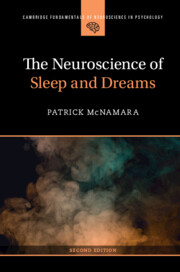Book contents
- The Neuroscience of Sleep and Dreams
- Cambridge Fundamentals of Neuroscience in Psychology
- The Neuroscience of Sleep and Dreams
- Copyright page
- Dedication
- Contents
- Figures
- Tables
- Preface
- Acknowledgments
- Chapter One What Is Sleep?
- Part I Sleep
- Chapter Two From Biological Rhythms to the Sleep Cycle
- Chapter Three Expression of Sleep across the Human Lifespan
- Chapter Four Characteristics of REM and NREM Sleep
- Chapter Five Sleep Disorders
- Chapter Six Theories of REM and NREM Sleep
- Part II Dreams
- References
- Index
- References
Chapter Three - Expression of Sleep across the Human Lifespan
from Part I - Sleep
Published online by Cambridge University Press: 06 April 2023
- The Neuroscience of Sleep and Dreams
- Cambridge Fundamentals of Neuroscience in Psychology
- The Neuroscience of Sleep and Dreams
- Copyright page
- Dedication
- Contents
- Figures
- Tables
- Preface
- Acknowledgments
- Chapter One What Is Sleep?
- Part I Sleep
- Chapter Two From Biological Rhythms to the Sleep Cycle
- Chapter Three Expression of Sleep across the Human Lifespan
- Chapter Four Characteristics of REM and NREM Sleep
- Chapter Five Sleep Disorders
- Chapter Six Theories of REM and NREM Sleep
- Part II Dreams
- References
- Index
- References
Summary
How should we study the typical development and expression of sleep patterns in people? The most straightforward way to do so would be to simply observe the development of sleep states in people as those people develop into maturity, reproduce, age, and die. But who, what peoples, should we study in order to get a picture of the typical human pattern?
- Type
- Chapter
- Information
- The Neuroscience of Sleep and Dreams , pp. 45 - 69Publisher: Cambridge University PressPrint publication year: 2023

